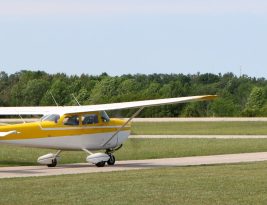This week we’ll expand on what we’ve discussed about regulations. Chapter 19 in the brand-new fourth edition of The Pilot’s Manual: Ground School has a great overview of the FARs you’ll need to know. Beyond that, of course, is our FAR/AIM; the complete
…Blog Posts
Drag as it relates to aerodynamics in aviation is just one of those things that must be dealt with and overcome – literally overcome. When we talk about drag in aviation it is usually discussed in relation to one of the four forces: lift, weight, thrust, and drag. It
…We’re talking about aerodynamics again this week. Today, an excerpt from the Pilot’s Handbook of Aeronautical Knowledge on the forces in climbs and descents.
Forces in Climbs
For all practical purposes, the wing’s lift in a steady state normal climb is the same as it is in
[Update: In December 2022, the FAA published the Aviation Weather Handbook (FAA-H-8083-28) which replaced Advisory Circulars 00-6 and 00-45.]
Today I would like to discuss weather, specifically the all-important topics of Galactic Cosmic Radiation and Solar Eruptive Activity. Wait, say what? That’s what I thought when reviewing
…[Update: In December 2022, the FAA published the Aviation Weather Handbook (FAA-H-8083-28) which replaced Advisory Circulars 00-6 and 00-45.]
For the first time since 1975, the FAA has updated Aviation Weather (AC 00-6B replacing AC 00-6A). A lot has changed since then in our understanding of meteorology and in
…Reading Monday’s post you learned that a pilot deviation (PD) is a pilot action that violates any Federal Aviation Regulation. The two broad categories of PDs are ground- or surface-based deviation and airborne deviation. A common example of a surface-based deviation would be a runway incursion, which just is
…Today on the Learn to Blog, we’ll take a look again at safety in and around the airport. This post is excerpted from the new edition of the Pilot’s Handbook of Aeronautical Knowledge.
A pilot deviation (PD) is an action of a pilot that violates any Federal Aviation
…Wind shear is defined as a change in wind direction and/or speed over a very short distance in the atmosphere. This can occur at any level of the atmosphere and can be detected by the pilot as a sudden change in airspeed. As a pilot you can be certain that
…

